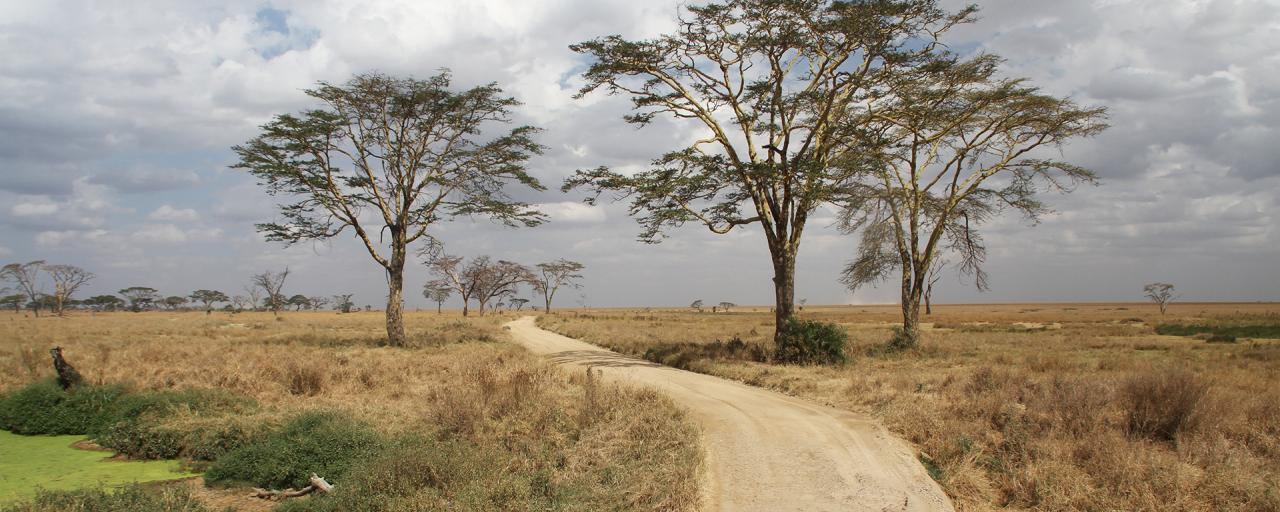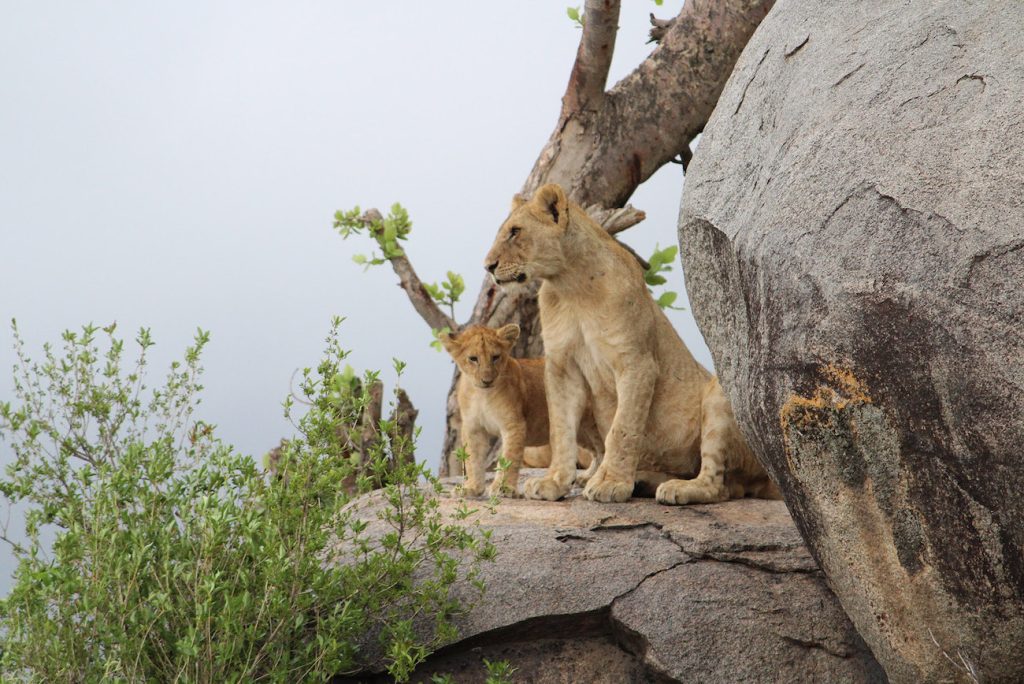Serengeti National Park, an iconic expanse of untamed beauty in northern Tanzania, stands as a testament to the raw essence of the African wilderness. Established in 1951 and covering an impressive 14,750 square kilometers, Serengeti is a sanctuary for biodiversity, a stage for the grand drama of life, and a living canvas where nature’s palette creates an awe-inspiring spectacle. As one of Africa’s most celebrated and cherished national parks, Serengeti beckons adventurers, wildlife enthusiasts, and dreamers alike to witness the eternal symphony that unfolds across its sprawling plains and acacia-dotted landscapes.
Serengeti National Park Overview
Serengeti, a Maasai word meaning “endless plains,” encapsulates the vastness and grandeur that define this extraordinary landscape. A UNESCO World Heritage Site and part of the larger Serengeti Ecosystem, the park is renowned for its role in one of the most awe-inspiring natural events on the planet—the Great Wildebeest Migration. Serengeti National Park, with its diverse ecosystems, expansive grasslands, and iconic wildlife, embodies the quintessential African safari experience.
Conservation Legacy of Serengeti National Park
The conservation legacy of Serengeti National Park traces back to its inception, fueled by a commitment to preserving the region’s unique ecosystems and wildlife. The park’s significance goes beyond its boundaries, contributing to the preservation of the greater Serengeti-Mara ecosystem—a critical habitat for countless species. Serengeti remains a stronghold for Africa’s biodiversity, symbolizing Tanzania’s dedication to sustainable conservation practices.
Scenic Majesty of the Serengeti

The landscapes of Serengeti National Park are a mosaic of natural wonders, from the sweeping plains that stretch to the horizon to the rocky outcrops known as kopjes and the meandering rivers that sustain life across the savannah. Acacia trees silhouette against the vast African sky, and the Seronera River provides a lifeline for the park’s inhabitants. Each vista is a testament to the enduring beauty of the African wilderness.
Best Time to Visit Serengeti
Choosing the right time to visit Serengeti National Park is crucial to experiencing its wonders to the fullest. While wildlife can be observed year-round, the timing of your visit may determine the specific spectacles you witness.
Dry Season (June to October)
The dry season is considered the best time for game viewing. With diminished vegetation, wildlife becomes more concentrated around water sources, providing optimal visibility. June to October is also the period of the Great Wildebeest Migration, where vast herds traverse the plains in search of fresh grazing.
Wet Season (November to May)
The wet season transforms Serengeti into a lush, green landscape, attracting migratory birds and providing a unique perspective on the park’s beauty. The calving season, occurring in February, is a highlight as wildebeests give birth to their young, attracting predators and offering a glimpse into the circle of life.
Weather and Climate
Serengeti National Park experiences a typical tropical climate, characterized by distinct wet and dry seasons. The dry season brings warm temperatures, with daytime highs ranging from 25 to 30 degrees Celsius (77 to 86 degrees Fahrenheit). The evenings are cooler, creating a comfortable atmosphere for nighttime activities. The wet season introduces occasional rainfall, revitalizing the landscape and supporting the park’s ecosystems.
Wildlife in Serengeti National Park
Serengeti’s reputation as a wildlife haven is unrivaled, with an astounding diversity of species that roam its plains and woodlands. The park is home to the “Big Five”—lion, leopard, elephant, buffalo, and rhinoceros—as well as a plethora of other iconic African wildlife.
Commonly Spotted Animals in Serengeti
Serengeti National Park, a realm of untamed beauty and extraordinary biodiversity, offers a front-row seat to the captivating dance of wildlife on the African plains. As you embark on a safari adventure through this iconic park, the encounters with its resident animals are nothing short of magical. From the majestic Big Five to the graceful gazelles and elusive predators, Serengeti is a haven for nature enthusiasts. Let’s explore the charismatic residents that make Serengeti a living tapestry of the wild.
| Common animals in Serengeti | |
|---|---|
| Lions | Wildebeests (abundant) |
| Leopards | Cheetahs |
| Elephants | Hippos |
| Buffalos | Crocodiles |
| Rhinoceros (rare sightings) | African Wild Dogs |
| Giraffes | Hartebeests |
| Zebras | Gazelles |

The abundance of prey and predators in Serengeti ensures that each safari is an immersive journey into the heart of the animal kingdom.
Birdlife in Serengeti National Park
For bird enthusiasts, Serengeti is a paradise with over 500 recorded bird species. From colorful songbirds to majestic raptors, the park’s varied habitats offer a rich tapestry of avian life.
Commonly Spotted Birds in Serengeti
In the expansive skies and varied ecosystems of Serengeti National Park, a vibrant tapestry of birdlife unfolds, offering a mesmerizing spectacle for avid birdwatchers and nature enthusiasts. With over 500 recorded species, ranging from majestic raptors to colorful songbirds, Serengeti’s avian residents contribute to the rich biodiversity of this African wilderness. Join us as we soar through the skies of Serengeti and encounter the diverse and enchanting bird species that call this iconic park their home.
| Common Birds in Serengeti | |
|---|---|
| Secretary Bird | Martial Eagle |
| Lilac-breasted Roller | African Fish Eagle |
| Grey Crowned Crane | Superb Starling |
| African Spoonbill | Vultures (White-backed, Rüppell’s Griffon, and Lappet-faced) |
| Yellow-billed Stork | Kori Bustard |
| African Grey Hornbill | Crowned Crane |
| Ostrich | Hamerkop |
| Ground Hornbill | Malachite Kingfisher |
| Yellow-throated Sandgrouse | Tawny Eagle |
The wetlands, rivers, and woodlands of Serengeti attract a kaleidoscope of birdlife, making it a paradise for birdwatchers.
Rivers of Serengeti National Park
Serengeti is crisscrossed by several rivers, adding to the diversity of its ecosystems and providing vital water sources for wildlife.
Seronera River
The Seronera River, flowing through the heart of Serengeti, is a lifeline for the park’s inhabitants. Its banks attract a variety of wildlife, including elephants, hippos, and crocodiles. Scenic landscapes along the river create picturesque settings for game viewing.
Grumeti River
The Grumeti River, located in the western part of Serengeti, is a vital water source during the dry season. The riverbanks are frequented by large herds of wildebeests and zebras during the Great Wildebeest Migration, making it a prime location for witnessing river crossings.
Mara River
The Mara River, forming the natural boundary between Serengeti and the Maasai Mara in Kenya, is a focal point during the Great Wildebeest Migration. Wildebeests face the perilous task of crossing the Mara River, attracting predators and creating dramatic scenes of survival and predation.
Accommodations in Serengeti National Park
Serengeti offers a range of accommodations, from luxury lodges to intimate camps, each providing a unique safari experience. Here are some examples of the best lodges and camps in Serengeti.
Luxury Lodges in Serengeti
Singita Sasakwa Lodge
Located in the Grumeti Reserves, Singita Sasakwa Lodge offers opulent suites with panoramic views of the plains. The lodge combines classic elegance with modern comforts, providing an exclusive retreat.
Four seasons Safari Lodge Serengeti
Nestled in the heart of Serengeti, this lodge combines luxury with a deep connection to nature. Spacious villas and suites feature contemporary design, and the lodge offers a range of amenities, including a spa and infinity pool.
Intimate Camps (Luxury Camps)
Serengeti Migration Camp
Positioned strategically to follow the Great Wildebeest Migration, Serengeti Migration Camp provides a unique and immersive experience. The camp’s luxury tents offer comfort in the midst of the wilderness.
Namiri Plains Camp
Located in the eastern part of Serengeti, Namiri Plains Camp is known for its exclusivity and excellent predator sightings. The camp’s spacious tents provide a cozy retreat after a day of safari adventures.
Lemala Ewanjan Tented Camp
Situated in the Seronera Valley, Lemala Ewanjan Tented Camp offers a blend of luxury and authenticity. The camp’s location provides easy access to wildlife-rich areas.
Lemala Nanyukie Tented Camp
Nestled in the heart of the Seronera Valley, Lemala Nanyukie Tented Camp is a midrange camp that combines comfort with a prime wildlife-viewing location. The camp’s spacious tents, adorned with local furnishings, offer a blend of luxury and authenticity. Guests can enjoy close encounters with nature while experiencing the beauty of Serengeti.
Mid-Range Camps
Kati Kati Tented Camp
For those seeking a balance between comfort and affordability, Kati Kati Tented Camp offers a mid-range option. The camp provides traditional safari tents and a close-to-nature experience.
Tortilis Serengeti Camp
Nestled in the wilderness of Serengeti, Tortilis Serengeti Camp offers a midrange accommodation option with a focus on both comfort and an authentic safari experience. The camp provides spacious tents featuring modern amenities, allowing guests to enjoy the tranquility of the surroundings while being close to nature.
Nyikani Camps (Formerly Chaka Camps)
Nyikani Camps, formerly known as Chaka Camps, provide a midrange safari experience in Serengeti. The camps are strategically positioned to follow the Great Wildebeest Migration, offering guests the opportunity to witness this natural spectacle up close. Tastefully designed tents provide a comfortable retreat after a day of exploring the wilderness.
strong>
Thorn Tree Camps
Thorn Tree Camps provide a midrange safari experience in the heart of Serengeti. With a focus on combining affordability with comfort, Thorn Tree Camps offer well-equipped tents surrounded by the natural beauty of the park. The camp’s strategic locations enhance opportunities for wildlife sightings.
Hippo Trail Camps
Located along the Hippo Trail in Serengeti, Hippo Trail Camps offer a midrange accommodation option for visitors seeking an immersive safari experience. The camps provide a blend of modern comfort and a close-to-nature atmosphere, allowing guests to enjoy the sights and sounds of Serengeti’s wilderness.
How to get to Serengeti National Park
Embarking on a journey to Serengeti National Park offers a choice of both air and road travel, each providing a unique perspective on the Tanzanian landscape. For those flying in, Kilimanjaro International Airport (JRO) near Arusha and Julius Nyerere International Airport (DAR) in Dar es Salaam are key entry points. Domestic flights from Arusha Airport or these international hubs can then seamlessly connect visitors to Seronera Airstrip, centrally located in the park, or to Grumeti and Kogatende Airstrips for specific regions. For the road-travel enthusiasts, a scenic 6 to 8-hour drive from Arusha unveils the beauty of the Tanzanian countryside en route to Serengeti. Once within the park, safari vehicles and guided tours ensure an immersive experience, making the journey just as memorable as the destination itself.
Airstrips in Serengeti National Park
Serengeti National Park is well-equipped with airstrips, providing convenient access to various regions within the park.
Seronera Airstrip
Located in the central part of Serengeti, the Seronera Airstrip is one of the busiest in the park. It serves as a gateway to the Seronera Valley, known for its high concentrations of wildlife, especially during the dry season.
Grumeti Airstrip
Situated in the western part of Serengeti, the Grumeti Airstrip is strategically positioned for those exploring the Western Corridor. It is an ideal entry point for witnessing the Great Wildebeest Migration in this region.
Kogatende Airstrip
In the northern reaches of Serengeti, the Kogatende Airstrip provides access to the Mara River, a critical location during the Great Wildebeest Migration. It offers a convenient starting point for safaris focused on the northern plains.
Extend your East African adventure by exploring the wonders of Ngorongoro Crater. Discover more about the region’s diverse landscapes, rich wildlife, and captivating natural beauty as you seamlessly transition from the majesty of Serengeti National Park to the enchanting realm of Ngorongoro Crater.
Ready to visit Serengeti with us?
Serengeti National Park, with its unbridled beauty, extraordinary wildlife, and the mesmerizing Great Wildebeest Migration, is a destination that transcends expectations. Each sunrise over the endless plains is a chapter in a timeless narrative of survival, resilience, and the eternal dance of life. Consider our curated safari packages, including exclusive experiences in Serengeti, and let the wonders of this African masterpiece unfold before you. In the embrace of Serengeti’s natural symphony, discover the magic that lies in the heart of the wild, where every moment is an echo of the untamed spirit of Africa.
